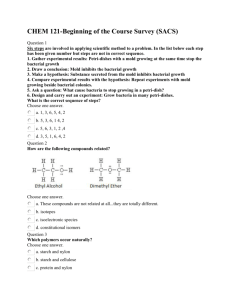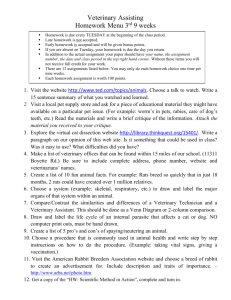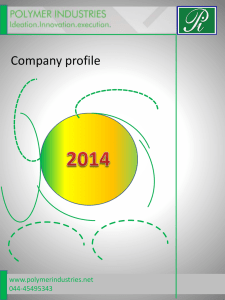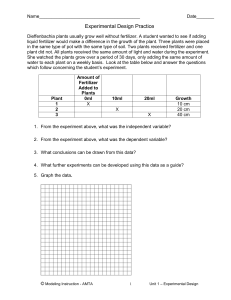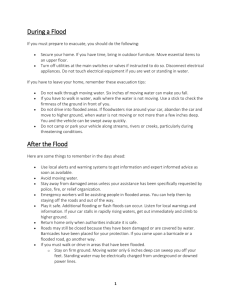Mold In Your Home Basic Facts Identifying Mold In Your Home Mold
advertisement
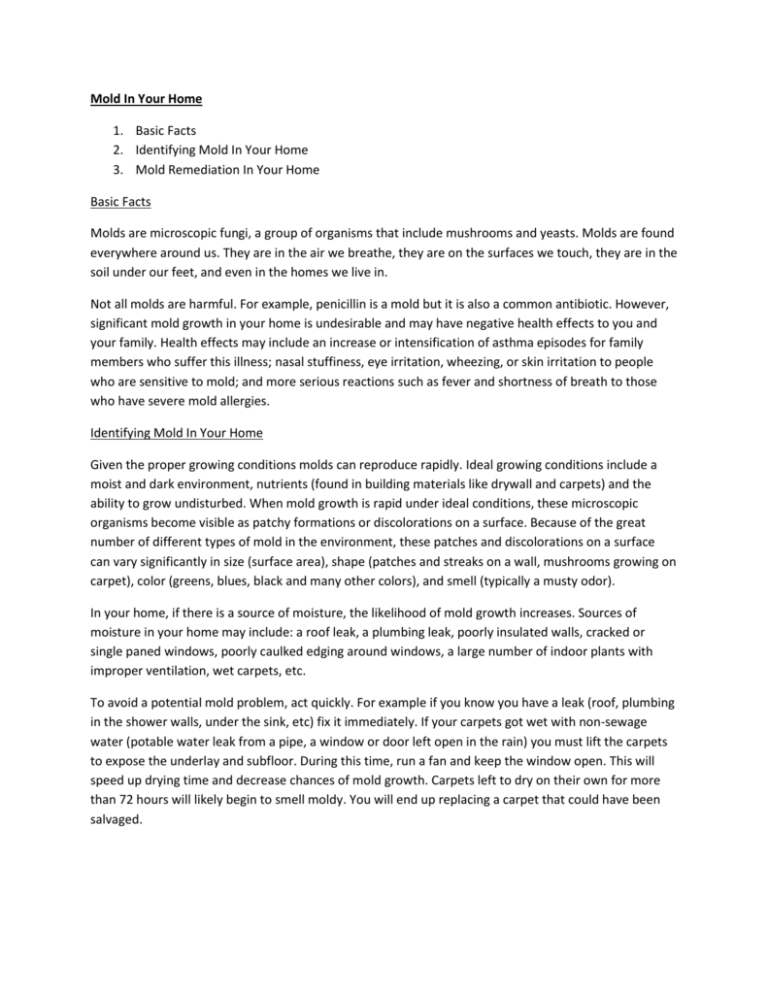
Mold In Your Home 1. Basic Facts 2. Identifying Mold In Your Home 3. Mold Remediation In Your Home Basic Facts Molds are microscopic fungi, a group of organisms that include mushrooms and yeasts. Molds are found everywhere around us. They are in the air we breathe, they are on the surfaces we touch, they are in the soil under our feet, and even in the homes we live in. Not all molds are harmful. For example, penicillin is a mold but it is also a common antibiotic. However, significant mold growth in your home is undesirable and may have negative health effects to you and your family. Health effects may include an increase or intensification of asthma episodes for family members who suffer this illness; nasal stuffiness, eye irritation, wheezing, or skin irritation to people who are sensitive to mold; and more serious reactions such as fever and shortness of breath to those who have severe mold allergies. Identifying Mold In Your Home Given the proper growing conditions molds can reproduce rapidly. Ideal growing conditions include a moist and dark environment, nutrients (found in building materials like drywall and carpets) and the ability to grow undisturbed. When mold growth is rapid under ideal conditions, these microscopic organisms become visible as patchy formations or discolorations on a surface. Because of the great number of different types of mold in the environment, these patches and discolorations on a surface can vary significantly in size (surface area), shape (patches and streaks on a wall, mushrooms growing on carpet), color (greens, blues, black and many other colors), and smell (typically a musty odor). In your home, if there is a source of moisture, the likelihood of mold growth increases. Sources of moisture in your home may include: a roof leak, a plumbing leak, poorly insulated walls, cracked or single paned windows, poorly caulked edging around windows, a large number of indoor plants with improper ventilation, wet carpets, etc. To avoid a potential mold problem, act quickly. For example if you know you have a leak (roof, plumbing in the shower walls, under the sink, etc) fix it immediately. If your carpets got wet with non-sewage water (potable water leak from a pipe, a window or door left open in the rain) you must lift the carpets to expose the underlay and subfloor. During this time, run a fan and keep the window open. This will speed up drying time and decrease chances of mold growth. Carpets left to dry on their own for more than 72 hours will likely begin to smell moldy. You will end up replacing a carpet that could have been salvaged. Mold Remediation In Your Home When there is visible mold in your home it is recommended to remove the mold and to identify and correct the source of the moisture. Having a sample sent to a lab for testing is not necessarily recommended. Also, using bleach to kill mold on a surface is not recommended because the fumes and increased releases of chlorinated effluents can be harmful to you and the environment. Instead, efforts should be made to remove the mold from the home. How much mold is visible (square feet), will determine how one should approach the problem. If possible, before attempting to remove moldy materials and replacing with it new materials; it is critical to identify and correct the source of the moisture. By removing the source of moisture, you will remove one of the factors that enables mold to grow to problematic levels. Small areas of mold on a surface (fewer than three patches, each less than a square meter) can be cleaned up yourself. Before you begin, you should consider using the following personal protective equipment: Safety glasses or goggles Disposable dust mask (3M 8210 or equivalent) Household rubber gloves Scrub with an unscented detergent solution; then sponge with a clean, wet rag and dry quickly. Using an unscented detergent will make it easier to detect any residual moldy odors. If a small area of mold is on drywall, clean the surface with a damp rag and some baking soda or some detergent. Do not let the drywall get too wet. Rags that are used do not need to be discarded. Simply laundering the rags is sufficient. If the mold returns to the same location, then more investigation is required to identify a source of moisture. Moderate areas of mold on a surface (more than three patches, each less than a square meter and/or up to 3 square meters of mold) can be cleaned as mentioned above for small areas with some extra precautions: Use the personal protective equipment mentioned above. Isolate the area to be cleaned from the rest of the house by using plastic sheeting taped to the walls and ceiling. Open a window if available to create air flow that will direct any airborne mold or spores outside. If cleaning the surface is not practical (for example, the drywall is soaked through and mould growth is significant), remove the moldy material, bag it (double bag if necessary), and tie off the bag before transporting the material through the house to the outside. If removing drywall that is moldy, cut at least 2 feet around the visible portion of mold. Sometimes it is not necessary to remove an entire wall if the mold growth is localized in one area. If dust is created in the area where the work is done, vacuum the surfaces using a High Efficiency Particulate Air (HEPA) filter for your vacuum cleaner. Dispose of the moldy materials into your local landfill. No extra precautions are necessary for disposal. Large areas of mold on a surface (3 square meters or more) should be remediated with extra caution or by an Indoor Air Quality Expert who specializes in mold remediation. With large areas of mold growth, the ideal growing environment must have existed for an extended period of time. Leaving a moisture problem unattended will almost always result in water damage and/or mold growth to building materials and furnishings. Like mentioned earlier, to stop the growth of mold one must identify and correct the source of moisture. This might be better achieved once the moldy materials have been removed to expose the interior of walls, the attic space and/or the subfloor. Building materials that can be removed that are moldy (drywall, insulation, carpeting, etc) should follow the same precautions mentioned for moderate areas of mold growth. If there is mold growth on harder surfaces like 2x4 studs, ceiling or floor joists, and cement or plywood subfloors, these surfaces can be cleaned and dried as long as the material is not rotting. They may not need to be removed. Use the cleaning procedures mentioned for small and moderate areas of mold growth. This information is only a guideline and if you feel that unsure how to proceed with a mold problem in your home, consult with a professional who is knowledgeable in indoor air quality and mold remediation. For more information you may also refer to trusted websites such as: http://www.cmhc-schl.gc.ca (Canadian Mortgage and Housing Corporation), http://www.hc-sc.gc.ca (Health Canada), www.epa.gov (United States Environmental Protection Agency). Figure 1. Basement room with water infiltrating along a foundation. Figure 2. Extreme mold contamination. Figure 3. Isolating an area to do work.


